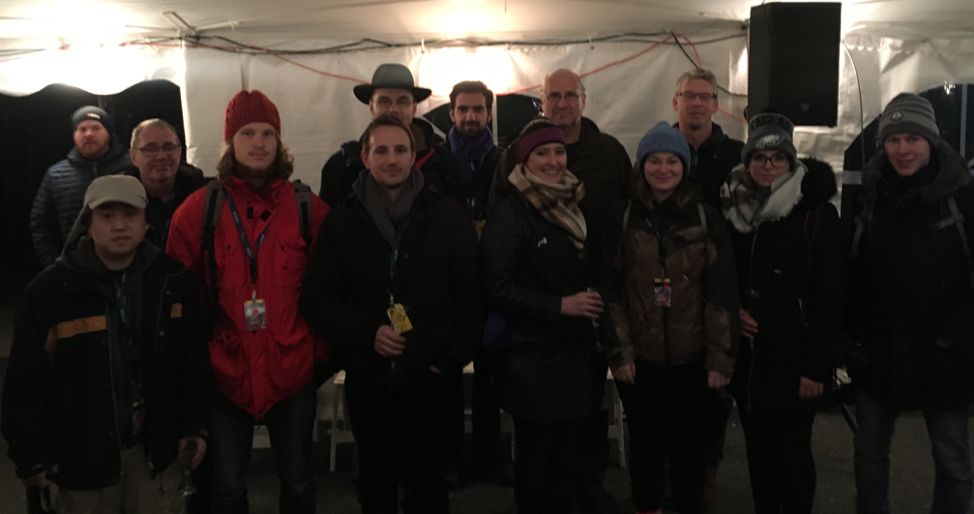
Members of Team EXCISS and Lauren Milord, DreamUp, celebrate a successful launch
Wallops Island, Virginia – November 17, 2018 – DreamUp, the leader in space-based educational offerings, is proud to announce that EXCISS, an experiment from a team of Goethe University student space researchers in Frankfurt, Germany successfully began its journey to the International Space Station at 4:01 this morning. The students’ experiment launched alongside over 7,000 pounds of crew supplies, other science investigations, spacewalk materials, hardware, and more.
The Northrop Grumman CRS-10 Cygnus successfully launched on an Antares rocket at 4:01 AM EST this morning from Pad 0A of Virginia Space’s Mid-Atlantic Regional Spaceport, located at NASA’s Wallops Flight Facility.
EXCISS is the third and final winning experiment from the Überfieger contest, an innovative nationwide competition conducted in Germany in partnership with the German Aerospace Center (DLR) that invited university student teams to apply for the opportunity to send their own investigation to the International Space Station (ISS). EXCISS is preceded by two other student experiments from German university teams: PAPELL, developed by KSat e. V., the small satellite student society at the University of Stuttgart and ARISE, developed by a student group at the University of Duisburg-Essen.
EXCISS, which stands for Experimental Chrondrule Formation at the ISS, investigates the formation of chrondrules, small lumps of mineral components that are the foundation of Chrondrites. Chrondrites are meteorites that stem from the very beginning of planet formation. In the experiment, a cloud of sand dust will be exposed to repeated electrical discharges, and the energy from these lightning collisions will create particles that will allow for insight into the planet formation process.
DreamUp joined the EXCISS team to watch the launch from Virginia this morning. Of the experience, Tamara Koch, Team Leader of Team EXCISS, said “It’s amazing how close we were able to get to the rocket launch, and I still can’t believe that our experiment is now on the way to the International Space Station.”
“The experience of working with DLR and all three Überflieger-winning teams has been transformative. The students have accomplished more than simply designing and building payloads, they are inspiring learners across Germany to engage with the International Space Station and reach for the stars. We couldn’t be prouder to support the Überflieger program and to continue to empower and engage the next generation of innovators and explorers around the globe,” says Lauren Milord, DreamUp’s Partnerships and Outreach Manager.
These launch opportunities were made possible via our partnership with NanoRacks and its Space Act Agreement with NASA.
For additional media inquiries, please email us at info@dreamup.org, and for continued updates, be sure to follow @DreamUp_Space on Twitter and Instagram.
—
About DreamUp
DreamUp provides space-based educational opportunities to learners and educators. The first company bringing space into the classroom and the classroom into space, DreamUp is uniquely positioned to engage learners globally with the most cutting-edge space research and developments, and inspire them through scientific discoveries in orbital and suborbital space. Entering into a Space Act Agreement with NASA in 2018, DreamUp has a proven track record, having brought over 400 student research payloads to the International Space Station and offering educational research opportunities on Blue Origin’s New Shepard space vehicle. From cutting-edge curriculum to rocket launch viewing, DreamUp endeavors to ensure that all student researchers can become the pioneers of space science, providing the most comprehensive educational experience possible and supporting learners’ scientific research and innovation efforts.
# # #
